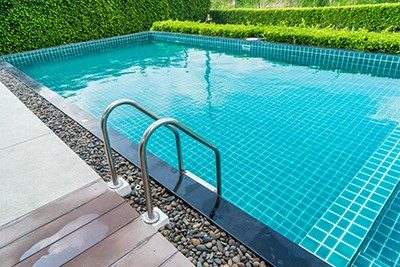FOR IMMEDIATE RELEASE
ACS News Service Weekly PressPac: February 17, 2021
Making swimming pools safer by reducing chlorine disinfection byproducts
“Making Swimming Pools Safer: Does Copper-Silver Ionization with Chlorine Lower the Toxicity and DBP Formation?”
Environmental Science & Technology
Swimming in indoor or outdoor pools is a healthy form of exercise and recreation for many people. However, studies have linked compounds that arise from chlorine disinfection of the pools to respiratory problems, including asthma, in avid swimmers. Now, researchers reporting in ACS’ Environmental Science & Technology have found that using a complementary form of disinfection, known as copper-silver ionization (CSI), can decrease disinfection byproducts and cell toxicity of chlorinated swimming pool water.
Disinfecting swimming pool water is necessary to inactivate harmful pathogens. Although an effective disinfectant, chlorine can react with organic matter and compounds introduced by swimmers, such as those in sweat, urine, sunscreens and cosmetics, to produce disinfection byproducts (DBPs). Epidemiological studies have linked DBPs to health problems, including respiratory issues, bladder cancer, and pregnancy and birth complications. One way to reduce the amount of added chlorine is through the use of complementary disinfection strategies, such as CSI, which involves generating antimicrobial copper and silver ions by electrolysis. Susan Richardson and colleagues wondered whether using CSI along with reduced chlorine levels could disinfect pool water while also reducing DBP formation and toxicity.
To find out, the researchers collected water samples from two pools treated with CSI and chlorine –– one outdoor and one indoor. They detected 71 DBPs, some of which were quantified for the first time in pools. In experiments with mammalian cells in the lab, the team found that the indoor pool samples were more toxic to cells than the outdoor samples, likely because outdoor DBPs can volatilize in the open air or degrade with sunlight over time. In indoor pool water, the lowest levels of DBP formation and toxicity were observed when the lowest amount of chlorine was used in combination with CSI. To control for factors such as number of swimmers, temperature and pH, the researchers also conducted experiments in simulated pools with a solution added that mimics human body fluids, and they observed similar results. These data suggest that using CSI with lower amounts of chlorine could be a way to make swimming safer, the researchers say.
The authors acknowledge funding from the University of South Carolina Magellan Scholarship program, the Guangxi Medical University Training Program for Distinguished Young Scholars and the National Science Foundation.
###
The American Chemical Society (ACS) is a nonprofit organization chartered by the U.S. Congress. ACS’ mission is to advance the broader chemistry enterprise and its practitioners for the benefit of Earth and all its people. The Society is a global leader in promoting excellence in science education and providing access to chemistry-related information and research through its multiple research solutions, peer-reviewed journals, scientific conferences, eBooks and weekly news periodical Chemical & Engineering News. ACS journals are among the most cited, most trusted and most read within the scientific literature; however, ACS itself does not conduct chemical research. As a leader in scientific information solutions, its CAS division partners with global innovators to accelerate breakthroughs by curating, connecting and analyzing the world’s scientific knowledge. ACS’ main offices are in Washington, D.C., and Columbus, Ohio.
To automatically receive press releases from the American Chemical Society, contact newsroom@acs.org.
Note: ACS does not conduct research, but publishes and publicizes peer-reviewed scientific studies.
Media Contact
ACS Newsroom
newsroom@acs.org


